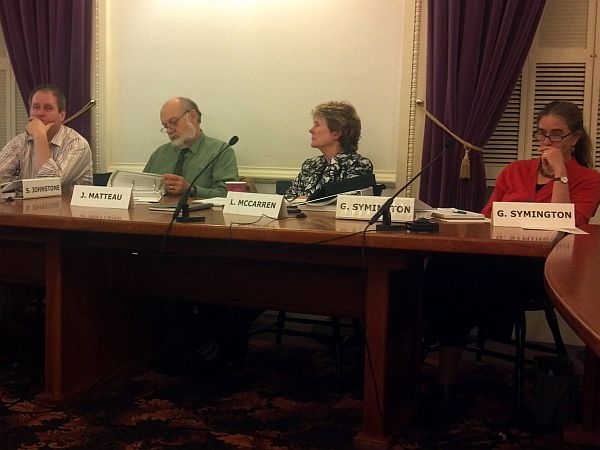A new state commission has begun to wade into the contentious debate over where Vermont builds energy projects.
Critics say the state’s ridgelines are at risk from industrial-scale wind development.
But the panel will confine its review to the permitting process and will not examine the state’s overall goals for renewable energy.
The first meeting of the energy siting commission was Permits 101.
Lawyers for state agencies ran through a power point presentation of the permits needed for many energy projects. These include discharge permits, stormwater permits, even permits needed to kill endangered species – such as bats threatened by the spinning blades of wind turbines.
But the big daddy of all the permits is called the certificate of public good, granted by the Public Service Board. Sarah Hofmann has appeared many times before the board in her job with the Department of Public Service, the state office that represents the ratepayers. She says the department and the board look at the public statewide, not just at the interests of neighbors directly affected by an energy project.
"What do we mean by the public interest and the public good? And it’s really, in terms of what we’re looking at, balancing the good of all the consumers in the state," she says. "And therefore, sometimes we do have people who do feel like their interests were not completely represented, or not represented at all, because we are representing the broader public interests."

Gov. Peter Shumlin appointed the five-person panel after a series of contentious cases involving large-scale wind. The commission is not confined to wind, but is looking at all energy development. The commission will also not question the state’s overall energy goals, which include a big focus on renewable sources.
Vermont already has a comprehensive land use and development law, known as Act 250. Energy projects are evaluated under a separate statute. Will Wiquist, the executive director of the Green Mountain Club, says Act 250 has strict environmental protections for construction above 2,500 feet. The same standards don’t apply to energy projects.
"Those types of considerations should be considered on energy projects like every other project in the state of Vermont," Wiquist says. "And that should be considered because wind is particularly geared toward being on high elevations. Our most fragile vegetation is there, and the Long Trail, which is such a resource for our economy and for our culture here in Vermont."
But an advocate for renewable energy developers says the review process is already lengthy and rigorous. Gabrielle Stebbins is the executive director of Renewable Energy Vermont.
"When you look at Vermont permitting process and how many years it can go on, there are always opportunities for improvement. So it’s timely to take a look, particularly with having quite a bit more renewable energy projects being deployed," she says.
The commission also heard from opponents of wind projects, who said towns needed a greater voice in the review.
Members of the panel selected Jan Eastman, a former state natural resources secretary, as their chair. The group will hold hearings in January and February.